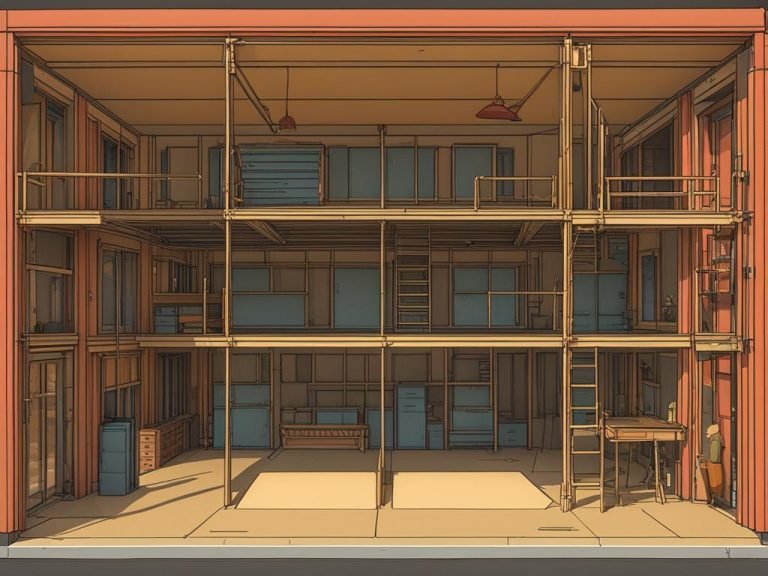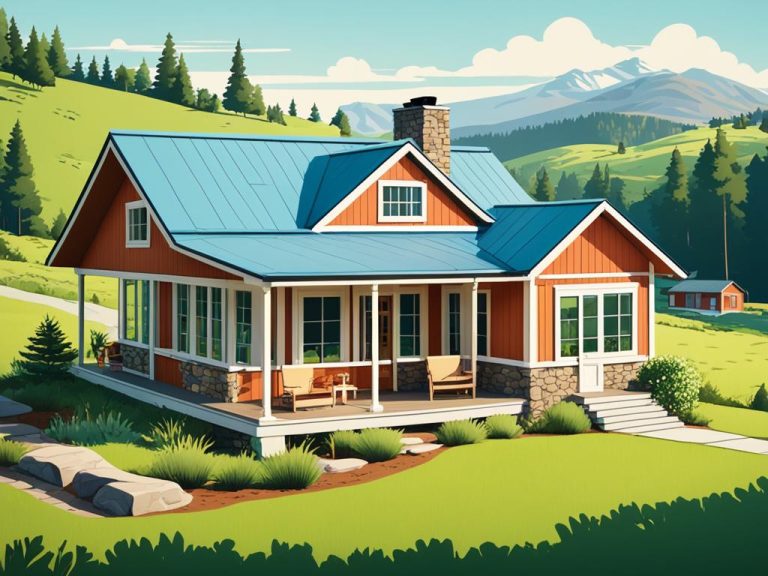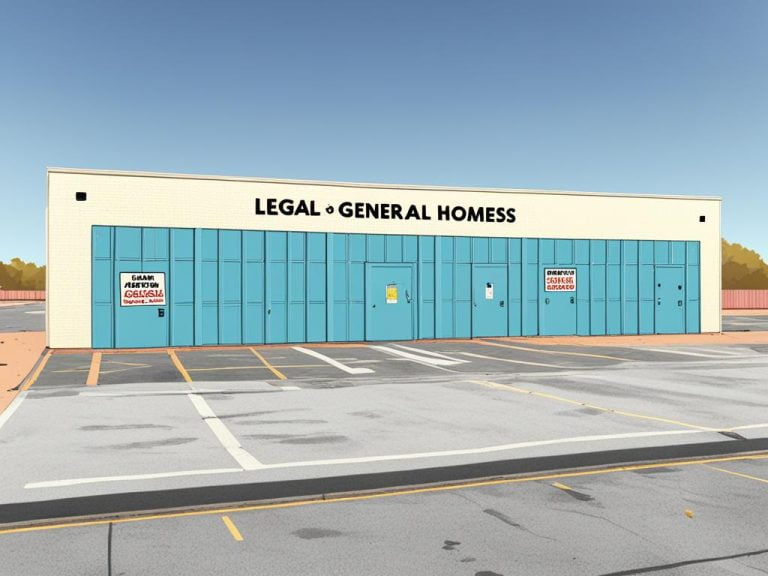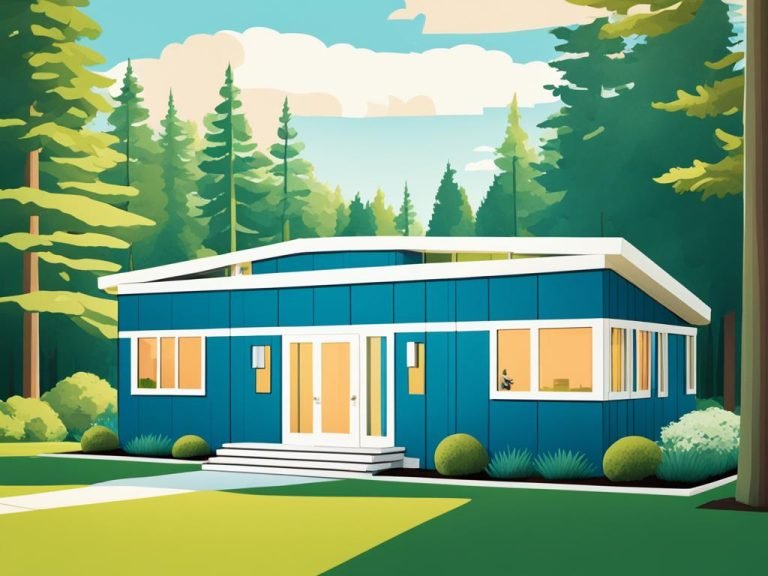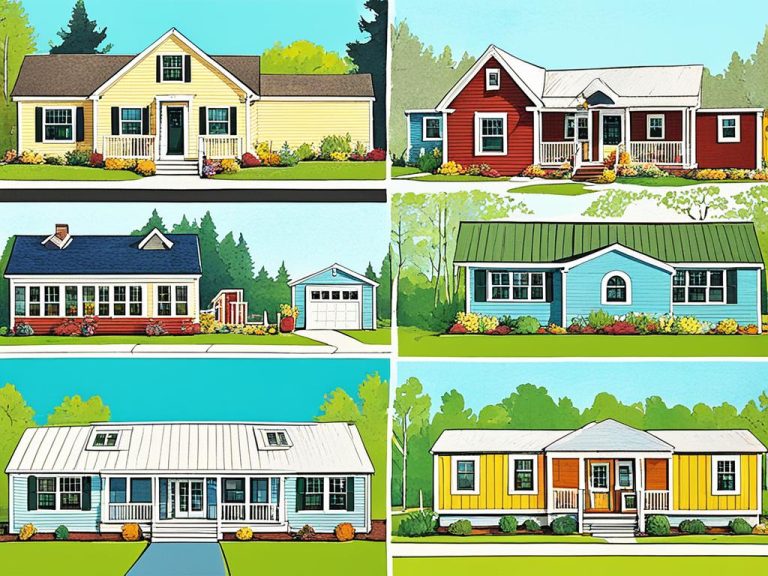Prefab Houses 1945: Post-War Home Evolution
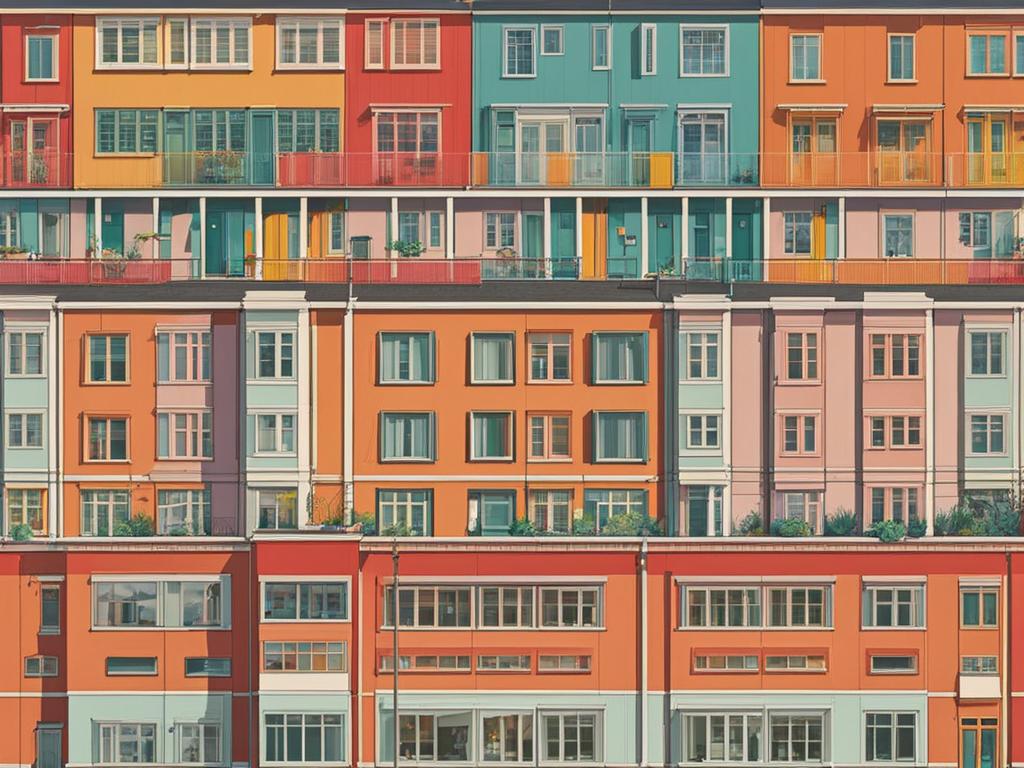
After the devastation of World War II, there was a pressing need for housing in Britain. In response, prefab houses, also known as “prefabs,” emerged as a temporary solution to the housing crisis. These innovative structures marked a significant shift in post-war housing trends, offering affordability, sustainability, and improved living standards.
Early prefabs were constructed using timber frames and clad in asbestos or cement panels. Later iterations utilized precast concrete or steel frames with asbestos cladding. Despite their intended temporary nature, many prefabs have far exceeded their expected lifespan and continue to be cherished by their occupants.
Between 1945 and 1949, a total of 156,623 prefab bungalows were built as part of the Temporary Housing Programme. Remarkably, around 8,000 of these prefabs still exist in the UK today, standing as testament to their enduring architectural and historical significance.
Key Takeaways:
- Prefab houses emerged as a temporary housing solution in post-war Britain.
- They offered affordability, sustainability, and improved living standards.
- Early prefabs used timber frames and asbestos or cement cladding.
- Later designs incorporated precast concrete or steel frames with asbestos panels.
- Around 8,000 prefab bungalows from the 1945-1949 era still exist in the UK.
The Temporary Housing Programme
The Housing (Temporary Accommodation) Act of 1944 authorized the implementation of the Temporary Housing Programme, aimed at providing 300,000 prefabricated homes in Britain within a span of 10 years. To achieve this ambitious goal, the government allocated up to £150 million for the construction of temporary, prefabricated housing.
In the decade following the war, the nation witnessed the construction of nearly 500,000 permanent homes using some form of prefabrication. These prefabs were often built on bomb sites, some of which were cleared and prepared by prisoners of war, further showcasing the resourcefulness of the temporary housing programme.
An exhibition held in 1944 showcased a variety of prefab designs, including the Uni-Seco, Arcon, and AIROH models. This exhibition attracted significant public interest and support, highlighting the innovative nature of prefabricated homes and their potential to address the post-war housing shortage.
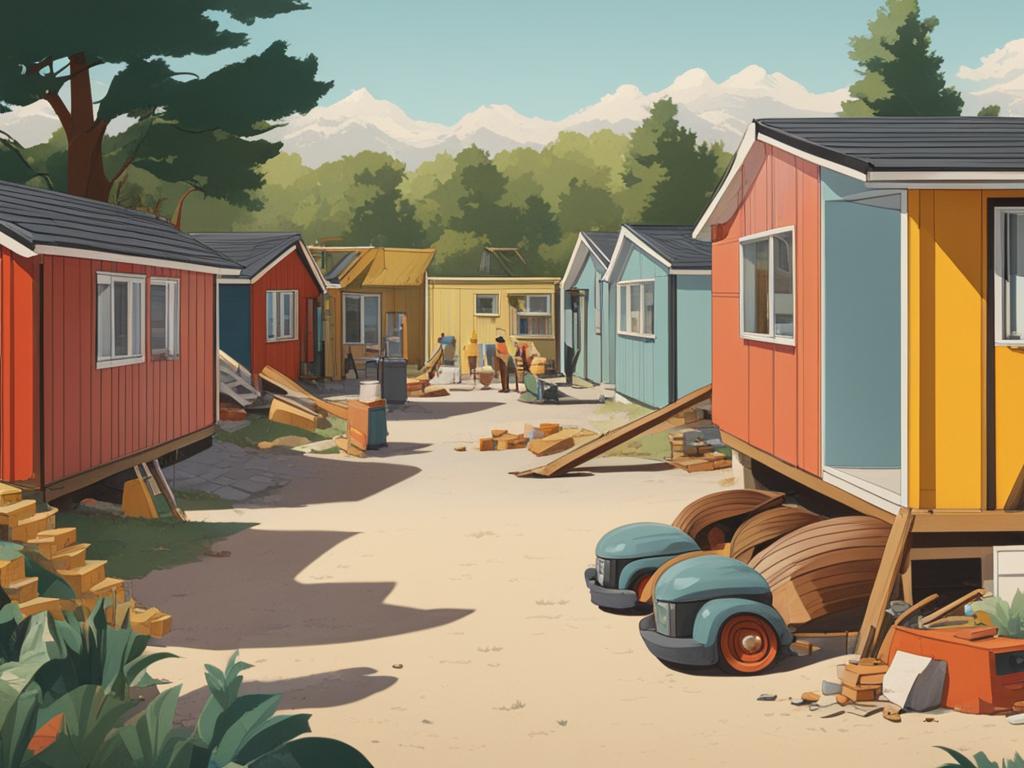
- Authorized by the Housing (Temporary Accommodation) Act of 1944
- Aimed to provide 300,000 prefabricated homes
- The government allocated up to £150 million
- Nearly 500,000 permanent homes built within a decade
- Exhibition showcasing different prefab designs
Through the Temporary Housing Programme, prefabricated homes played a crucial role in tackling the housing crisis and shaping construction trends in post-war Britain.
The Impact of Prefabs on Housing Stock
The prefab housing program aimed to address the post-war housing shortage in the UK. The country faced a significant shortfall of housing stock, with an estimated shortage of 200,000 houses. The government’s goal was to build 500,000 prefabricated houses with a planned lifespan of 10 years. However, only 156,623 prefabs were constructed between 1945 and 1951.
Despite the lower-than-planned number, the prefab initiative, along with other non-traditional building techniques, contributed to the construction of one million new council houses by 1951, easing the housing demand to some extent.
In addition to their immediate impact, prefabs also influenced construction trends and techniques in the post-war era. The need for quick and affordable housing solutions led to innovations in modular construction and standardized building components.
The Role of Prefabs in Addressing the Housing Shortage
- Prefabs were a crucial response to the post-war housing shortage, offering a rapid and cost-effective solution.
- Despite not meeting the initial target, the construction of over 150,000 prefabs helped alleviate some of the housing demand.
- By combining modular construction techniques with standardized building components, prefabs facilitated efficient and speedy construction.
Contributions to Construction Trends
- The use of prefabrication in housing construction paved the way for future advancements in off-site building techniques.
- Modular construction became a popular trend, enabling faster construction times and reduced costs.
- The prefabrication process emphasized standardization, leading to the development of building codes and regulations that improved safety and quality in the construction industry.
The impact of prefabs on housing stock was significant, both in addressing the immediate housing shortage and setting the stage for future construction trends. The prefab initiative not only provided a temporary solution but also influenced the way homes were built in the post-war era.
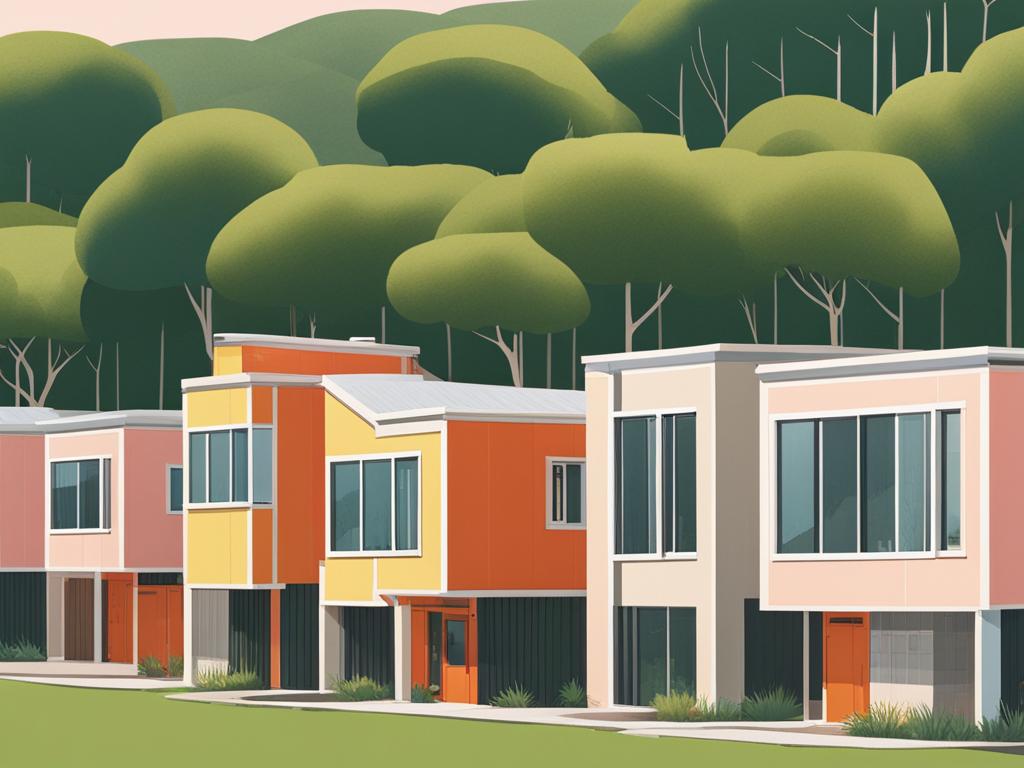
Prefab Standards and Innovations
The Ministry of Works played a crucial role in establishing standards for prefabricated homes in post-war Britain. These standards aimed to ensure a high level of quality and functionality, while also addressing the unique challenges of prefabrication.
One of the key standards was the minimum floor space requirement of 635 square feet, ensuring that prefab houses provided adequate living space for their occupants. Additionally, a maximum width of 7.5 feet was set to facilitate easy transportation of the prefabricated components to the construction site.
To further streamline the installation process and optimize space utilization, an innovative solution called the “service unit” was introduced. The service unit combined the kitchen and bathroom into one pre-built section, allowing for efficient plumbing and wiring connections. This integration not only simplified the construction process but also maximized the usable space within the prefab homes.
The service unit was equipped with modern amenities, reflecting the innovative approach of post-war housing solutions. It included features such as central heating, hot water supply, built-in oven, refrigerator, and Baxi water heater. These additions brought comfort and convenience to the residents, aligning with the evolving expectations for contemporary living standards.
In terms of aesthetics, prefabs were pre-decorated in a soothing magnolia color, with gloss-green accents on the woodwork. This standardized design ensured a cohesive and visually pleasing appearance for the prefab communities, despite their temporary nature.
Overall, the establishment of prefab standards and the introduction of innovative features exemplified the forward-thinking mindset that underpinned post-war housing solutions. These measures not only enhanced the speed and efficiency of construction but also offered residents a modern and comfortable living experience.
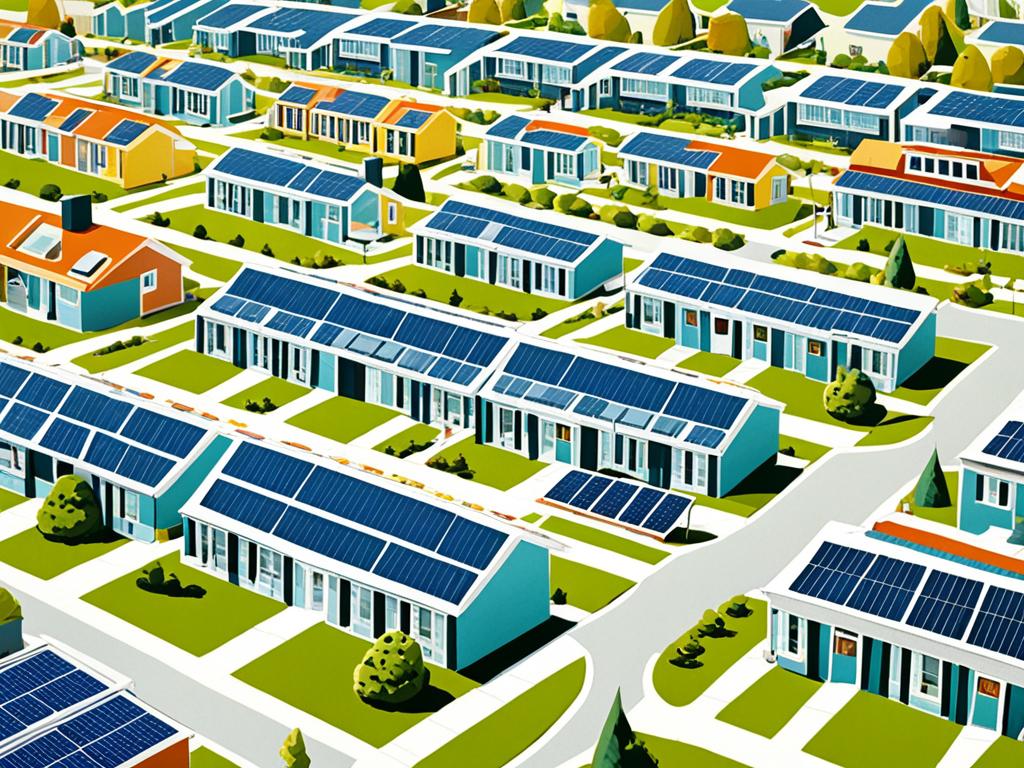
Pre-fabricated Concrete Houses
To meet the continuing housing shortage and reduce costs, precast reinforced concrete (PRC) houses were developed as a permanent solution. PRC houses were made from concrete panels reinforced with steel and assembled using a steel frame. Different builders marketed various PRC designs, such as Airey, Cornish, Wates, Unity, Reema, Tarran, Woolaway, and Parkinson. These houses were quick to assemble, required less skilled labor, and had a 60-year expected lifespan. The construction of PRC houses contributed to the completion of 1.5 million new homes between 1945 and 1955, alleviating the housing demand to some extent.
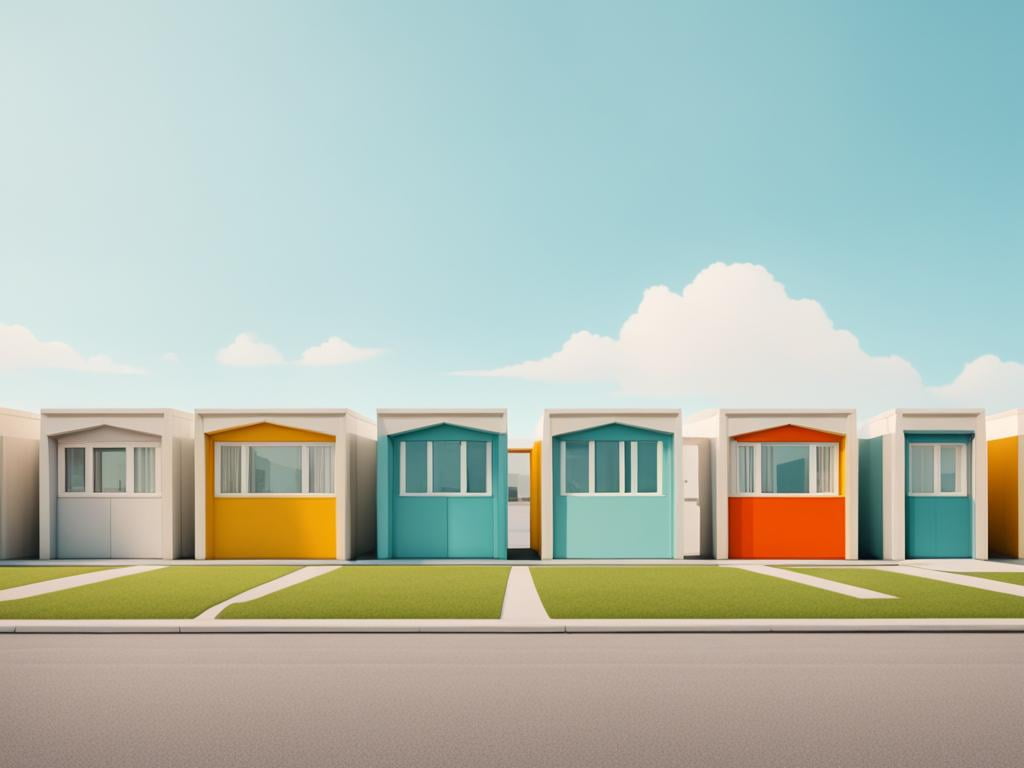
Legacy and Surviving Prefabs
Although prefabs were initially intended as temporary housing, many of them have stood the test of time. Some surviving examples have even been granted listed building status. The durability of prefab designs and construction methods, which were only meant to last 10 years, is a testament to their quality and the affection people have developed for them.
Today, approximately 8,000 prefabs remain in the UK, with around 30 of them being listed. These homes have become cherished parts of local communities and are defended against redevelopment, showcasing the unique and enduring legacy of prefab housing.
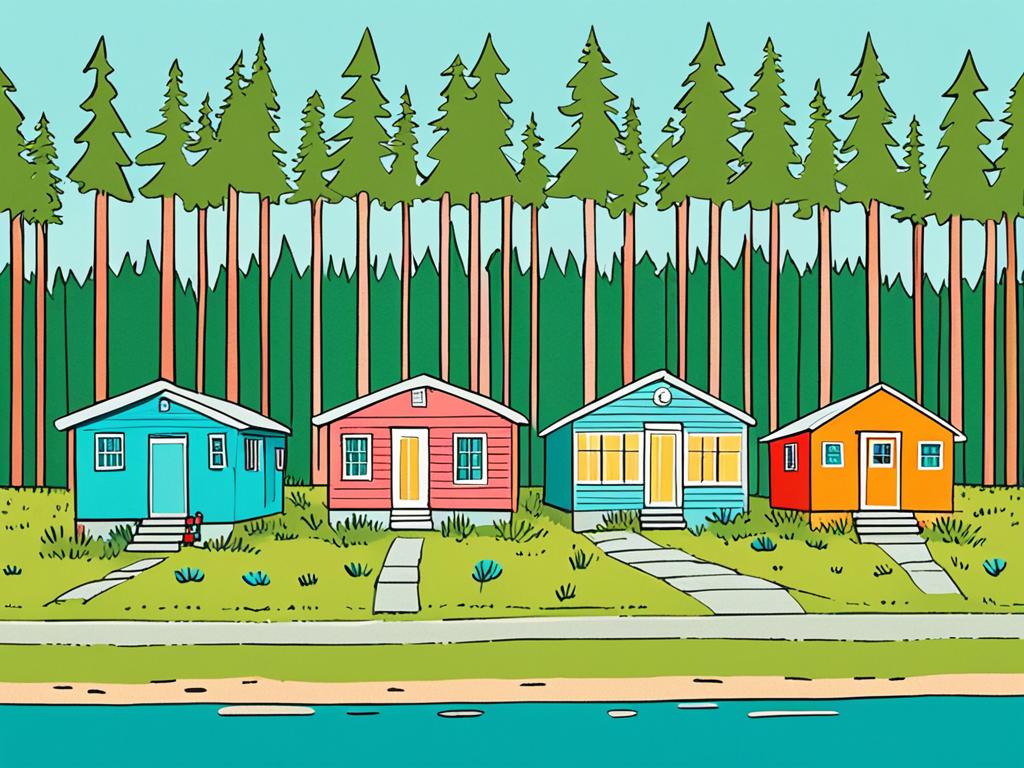
Preserving Historic Architecture
The surviving prefabs serve as a living testament to the post-war era and the innovative solutions that were implemented during that time. These homes embody the history of affordable and sustainable housing, providing a glimpse into the past and reminding us of the challenges faced by previous generations.
The preservation of these historic prefab houses is essential for maintaining a connection with our architectural heritage. They allow us to appreciate the craftsmanship and design of the past, while also providing insight into the social and economic conditions of the time.
Many organizations and local communities are actively involved in preserving and protecting these long-lasting homes. The efforts to safeguard these prefabs not only ensure their survival but also contribute to the cultural identity of the areas where they are located.
Community Resilience
The surviving prefabs have become an integral part of local communities, fostering a sense of pride and belonging. These homes have witnessed the passage of time, bearing witness to the changing landscapes and evolving societies.
Residents of these long-lasting prefabs often share stories and memories, passing them down from one generation to another. The community-driven initiatives to preserve these homes have forged stronger bonds among neighbors, creating a shared responsibility for the maintenance and protection of these cherished properties.
- Surviving prefabricated houses become cultural landmarks
- They embody the history of affordable and sustainable housing
- Preservation efforts ensure their survival and cultural significance
- Local communities foster a sense of pride and belonging
A Living Legacy
While the original intention was for prefabs to serve as a temporary solution, their enduring existence showcases their resilience and adaptability. These surviving prefabricated houses stand as a testament to the creativity and resourcefulness of their designers and builders.
As we continue to face housing challenges, the lessons learned from prefab housing can guide us towards more sustainable and affordable solutions. The legacy of these long-lasting homes inspires architects, builders, and homeowners alike to create innovative designs and constructions that withstand the test of time.
Conclusion
Prefab houses of the post-war era played a pivotal role in addressing the housing shortage in Britain. These temporary structures provided improved living standards for their residents and contributed to the construction of permanent homes using innovative building techniques such as precast concrete. Despite being temporary, many prefabs have lasted far longer than intended, and a significant number of them continue to be inhabited today. The legacy of prefab houses symbolizes a transformative period in British architecture and construction, shaping the landscape of affordable and sustainable housing.
FAQ
What were prefab houses and why were they built?
Prefab houses, or prefabricated houses, were temporary homes constructed in Britain after World War II to address the housing shortage caused by bombing. They were built quickly using pre-made components and offered improved living standards for families in need.
What materials were used in the construction of prefab houses?
Early prefab houses were constructed using timber frames and asbestos or cement cladding, while later ones were made with precast concrete or steel frames clad in asbestos panels. The use of these materials allowed for quick and efficient construction.
How long were prefab houses intended to last?
Prefab houses were designed to last for a decade. However, many prefabs have lasted far longer than intended, with some still being inhabited today.
How many prefab houses were built during the post-war period?
A total of 156,623 prefab bungalows were built between 1945 and 1949 in the UK as part of the Temporary Housing Programme. Approximately 8,000 of these prefabs still exist today.
What amenities did prefab houses offer?
Prefab houses were equipped with modern amenities, including central heating, hot water supply, built-in oven, refrigerator, and a Baxi water heater. These features contributed to improved living standards for residents.
What were precast reinforced concrete houses?
Precast reinforced concrete (PRC) houses were developed as a permanent housing solution. They were made from concrete panels reinforced with steel and had a steel frame. PRC houses required less skilled labor and had a 60-year expected lifespan.
How many new homes were constructed using prefabrication?
In the first decade after the war, nearly 500,000 permanent homes were built using prefabrication techniques. Along with other non-traditional building methods, prefabs contributed to the completion of one million new council houses by 1951.
Are there any surviving prefabs today?
Yes, approximately 8,000 prefabs remain in the UK, with around 30 of them being listed as historically significant buildings. These surviving prefabs have become cherished parts of local communities and showcase the unique legacy of prefab housing.

